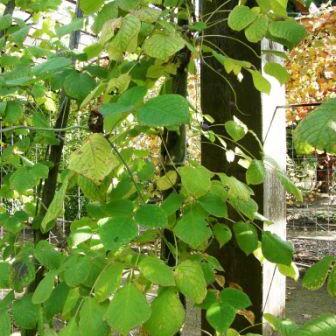An evergreen creeper or vine. The leaves are compound. They have leaflets arranged like fingers on a hand. There are 3-5 leaflets. The size and shapes vary. They are oblong and 6-10 cm long by 3-5 cm wide. The male and female flowers are separate on the same plant. They are greenish-purple with an unpleasant smell. The fruit is narrowly oval and pale purplish blue. It is 2 cm long by 1.5 cm wide. The seeds are oval and 4-6 mm long.

